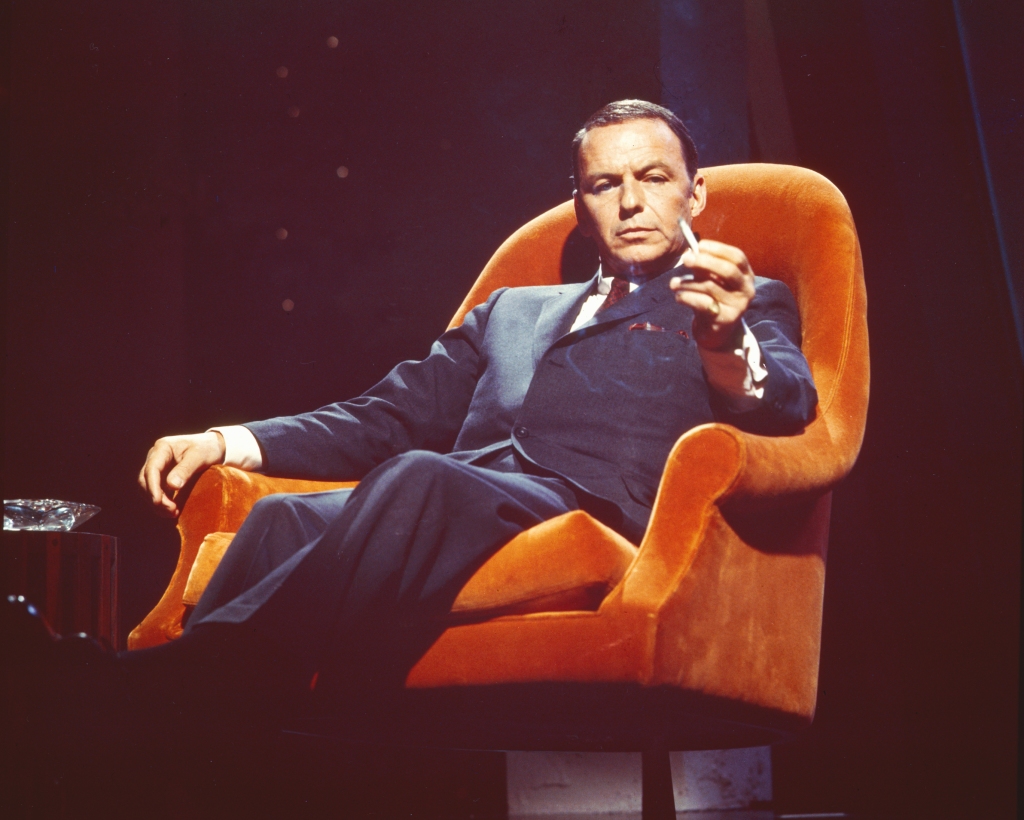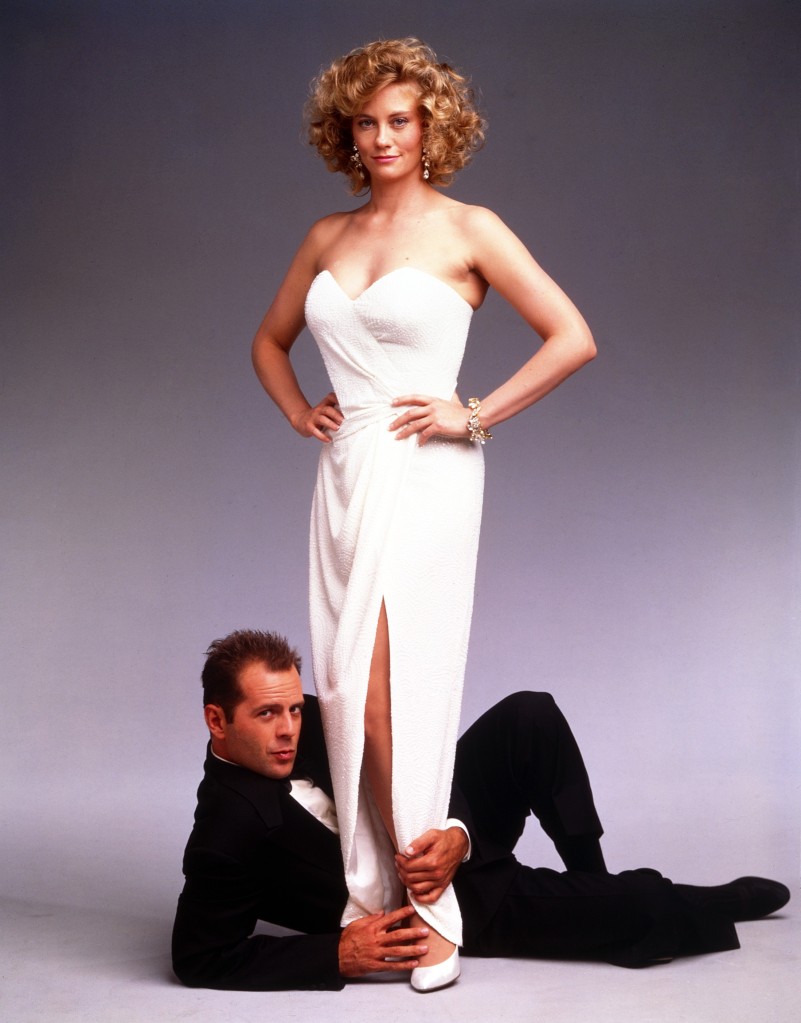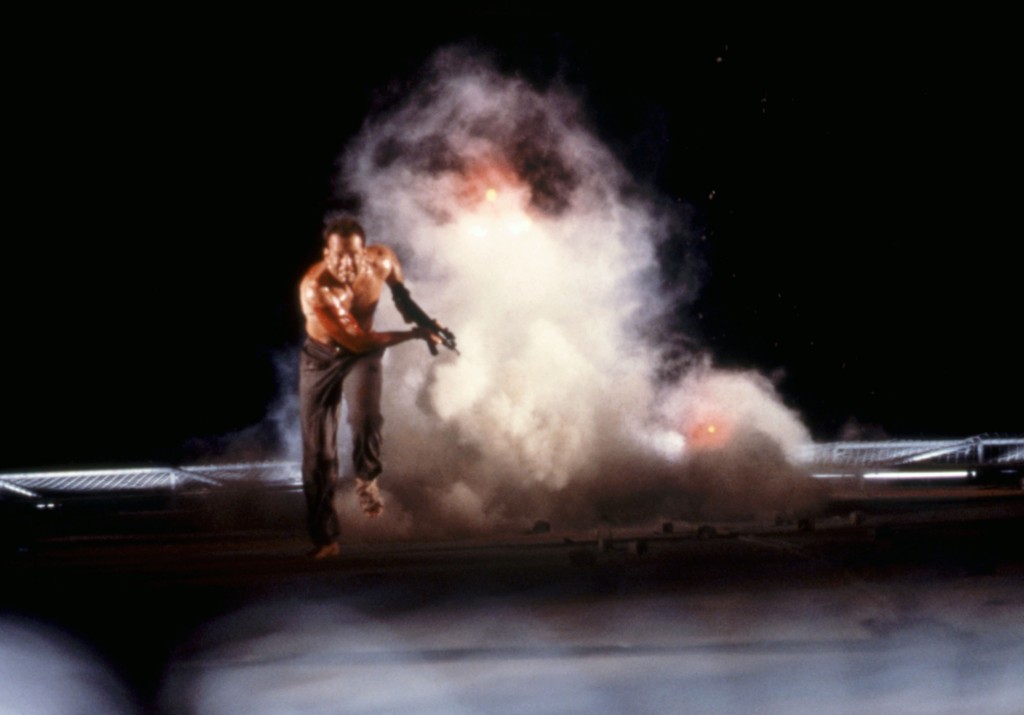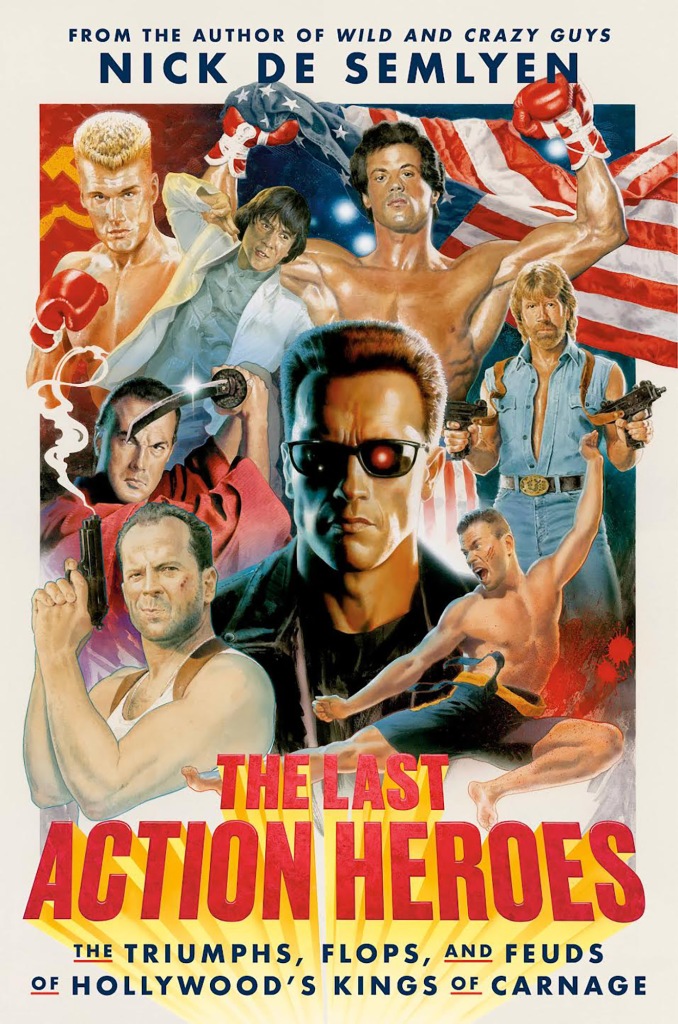‘Die Hard’ crew feared Bruce Willis was dead after first scene
When the screenplay to “Die Hard” hit Hollywood’s agents and A-listers circuit, the world’s top actors couldn’t dismiss it quickly enough.
“James Caan told me directly, ‘I read the script, and this guy’s running away for the first twenty-five pages,’” Steve de Souza, the film’s screenwriter, says in the new book “The Last Action Heroes: The Triumphs, Flops, and Feuds of Hollywood’s Kings of Carnage” by Nick de Semlyen (Crown).
“In the context of these ’roid-rage, superhuman heroes we had at the time, this character seemed like a pu–y.”
The character in question, of course, was John McClane, who transformed Bruce Willis from a wise-cracking, Chandler Bing-esque TV banterer into an action movie legend with the 1988 now-classic.
Even though it almost killed him.
In fact, a scene in which Willis shot through the air by an explosion was scheduled early in the shoot so that if something had gone wrong — which it nearly did — they’d have time to recast his role.
Due to the film’s sarcastic humor and McClane starting the film as more of a loser than a hero, a slew of Hollywood’s A-list actors passed on the role, including Clint Eastwood — who didn’t get the character’s sense of humor — and Richard Gere, a Buddhist who was seeking more spiritual roles. Burt Reynolds chose to shoot the television special “A Beverly Hills Christmas” with Jimmy Stewart and Lucille Ball instead.
Other names rumored to have passed include Arnold Schwarzenegger, Charles Bronson, Harrison Ford, Al Pacino and even 72-year-old Frank Sinatra, who supposedly had to be asked due to an odd contractual matter involving a previous film.
Willis, when first approached, passed on the movie due to his commitments to the TV hit “Moonlighting.” But that changed when his co-star, Cybill Shepherd, announced her pregnancy, providing Willis an unexpected 11-week hiatus.
Given his nature, Willis might have seemed perfect for the role on paper.
A dedicated delinquent in his younger years, Willis was a fan of “streaking” — running through the streets buck naked save for sunglasses and sneakers, a fad that was popular for a brief period in the 1970s — and getting into fights.


But he was actually an unlikely candidate for the role.
A voracious reader — he supposedly read “The Lord of the Rings” trilogy 15 times — Willis was no fan of the action genre, and had previously passed on playing the lead in “Lethal Weapon.”
His recent foray into movie acting, the 1987 film “Blind Date,” had flopped at the box office, and he was the public face of a popular wine cooler that became informally known as “Bruce Juice.”
Even the director of “Die Hard,” John McTiernan, was initially hesitant to believe that Willis could nail the part of John McClane after hearing nothing but negativity about Willis’ acting in “Blind Date.”

“Bruce went and did his television character, and on a big screen it didn’t work,” says McTiernan.
“Once the audience could see Bruce, closely and in higher definition, they didn’t like him. They didn’t like the smartass thing.”
Willis received the role only after most of the rest of Hollywood had turned it down.
“They’re going to laugh you off the screen,” “Moonlighting” creator Glenn Gordon Caron told him when he was cast. “That’s a Schwarzenegger movie.”
But to Willis’ great fortune — literally — he filmmakers were desperate and he found himself in control of the negotiations over the part. His agent asked for a then-unbelievable $5 million, and told the producers that if they didn’t agree to the figure that week, that Willis would be heading off to Japan to star in commercials.

This resulted in a heated meeting between the film’s co-producer Larry Gordon and Fox chairman Barry Diller. “Are you out of your f–king mind?” Diller exclaimed to Gordon, upon hearing the proposed sum.
Still, Diller acquiesced; the movie was the only action film on the studio’s docket at the time, and it was in danger of collapsing if the deal wasn’t made.
It was a great victory for Willis, especially considering that just a few years earlier, he couldn’t even secure the lead role in “Police Academy,” which went to Steve Guttenberg instead.
Inspired by the novel “Nothing Lasts Forever” — which itself was inspired by the film “The Towering Inferno” — the character of John McClane was originally more of a suave, sports coat wearing James Bond type.

When Willis was cast, McClane was retooled into more of a blue-collar wiseass based on Willis’ own background as a truck driver, a security guard at a nuclear power plant and a New York City bartender renowned for a secret-ingredient signature cocktail called “Honey I’m Home.”
One month before filming, Willis began to transform himself. He went to AA, quit drinking and began a strict workout regimen.
But despite his efforts, the challenge before him became apparent in the film’s very first shot.
Arriving directly from the set of “Moonlighting,” he was whisked to the top of a five-story parking garage.
“As he waited, rubbing his hands together and wearing only a pair of black trousers, a white firehose was looped around his bare midriff, a Heckler & Koch MP5 submachine gun hung via a strap from his neck, and a viscous gel slathered over his exposed skin,” writes de Semlyen.

When Willis asked what the gel was for, he was told it would prevent him from catching on fire.
He quickly learned why. For his first shot, he jumped from a ledge onto an airbag below.
“As he did, large plastic bags of gasoline were detonated, unleashing a fireball that blew Willis, he claimed, right to the edge of the bag,” writes de Semlyen.
“When I landed, everyone came running over to me and I thought they were going to say, ‘Great job! Attaboy!’” Willis later recalled. “And what they were doing is seeing if I’m alive because I almost missed the bag.”

Filming scenes like this for “Die Hard” while also shooting “Moonlighting” came to seem like a whirlwind for the actor, with Willis telling Caron at one point that he had “no idea what’s going on.”
He also developed some quick tension with the film’s director, McTiernan, who later said that Willis was sensitive but hard to connect with, and that he seemed to have a basic distrust of movie people.
McTiernan saw this early on when Willis, at the end of the first week of shooting, refused to follow direction for blocking out a complicated action sequence. After an argument that grew increasingly heated, the director finally understood the true motivation behind his star’s reluctance.
Willis, it turned out, was apprehensive about the camera focusing on his thinning hair.
McTiernan assured him, “Bruce, it’s our job to make you look good!”

As the shoot progressed, Willis grew more comfortable, perhaps assisted in part by his impromptu Las Vegas wedding at the Golden Nugget hotel to his girlfriend, Demi Moore, three weeks into the filming.
He began joking around more with the cast, showcasing his wisecracking “Moonlighting” persona. As McClane crawled through a tight ventilation shaft, his line, “Now I know what a TV dinner feels like” was made up on the spot by the actor.
Willis also wound up bringing something to the film that action stars at the time rarely exhibited — a sensitive side.
Noting publicly that the average viewer couldn’t relate to Sylvester Stallone’s Rambo character, Willis spent time refining his reactions for a scene where he relayed a message to his wife while picking glass out of his feet.

To get to the character’s emotional core, Willis “imagined what he would tell new wife Demi Moore if he thought he might never see her again,” writes de Semlyen.
While the scene was shot two different ways to give McTiernan options, in the end, the take where Willis sobbed was the one used. The actor later said that it was his favorite scene in the movie.
Still, “Die Hard” was unquestionably an action movie first.
After his presidency, Ronald Reagan took an office in Fox Plaza, the building portrayed as Nakatomi Plaza in the film. As his advance team prepared the office, the FBI was called in due to the discarded shell casings found throughout the building, left over from the “Die Hard” shoot.
But even after filming was complete, faith in Willis’ box office draw was at a low point.
The studio focus-grouped a poster with a large shot of the actor and a smaller shot of the building; it had the lowest score of any poster the studio had ever tested.
They eventually reversed the pictures, centering the poster around a large building and a tiny Bruce Willis.
To make matters worse, Willis had begun a public feud with Shepherd around this time, and, de Semlyen writes, an employee of his had died in an accident while working for him. Reports began to emerge that when the film’s trailer played in movie houses, audiences booed whenever Willis appeared on screen.
In the end, though, none of this mattered — the movie, and Willis’ performance, were just too good.
“Die Hard” became the top-grossing action film of 1988, turning the actor into a major action star.
Read the full article Here


